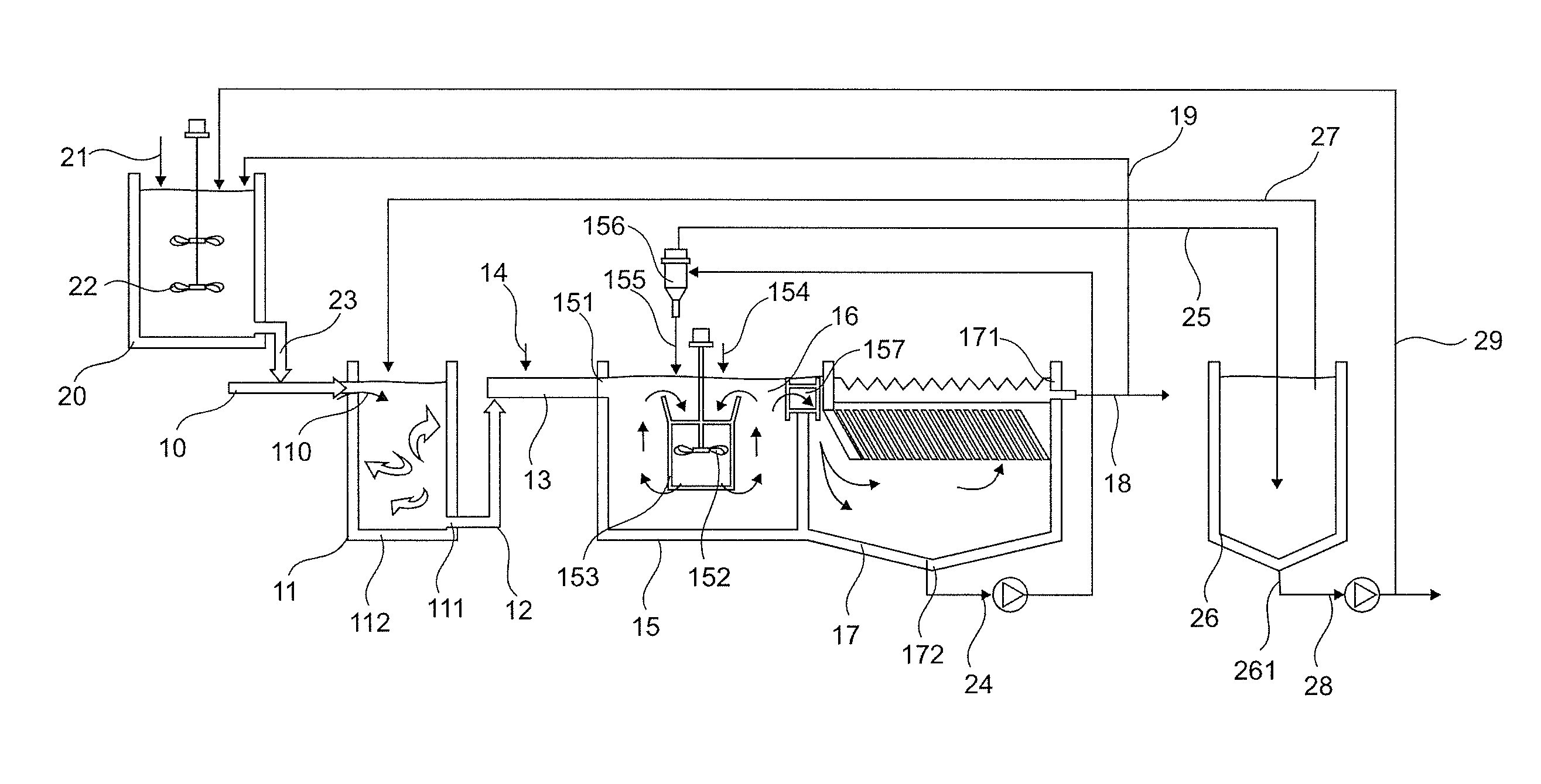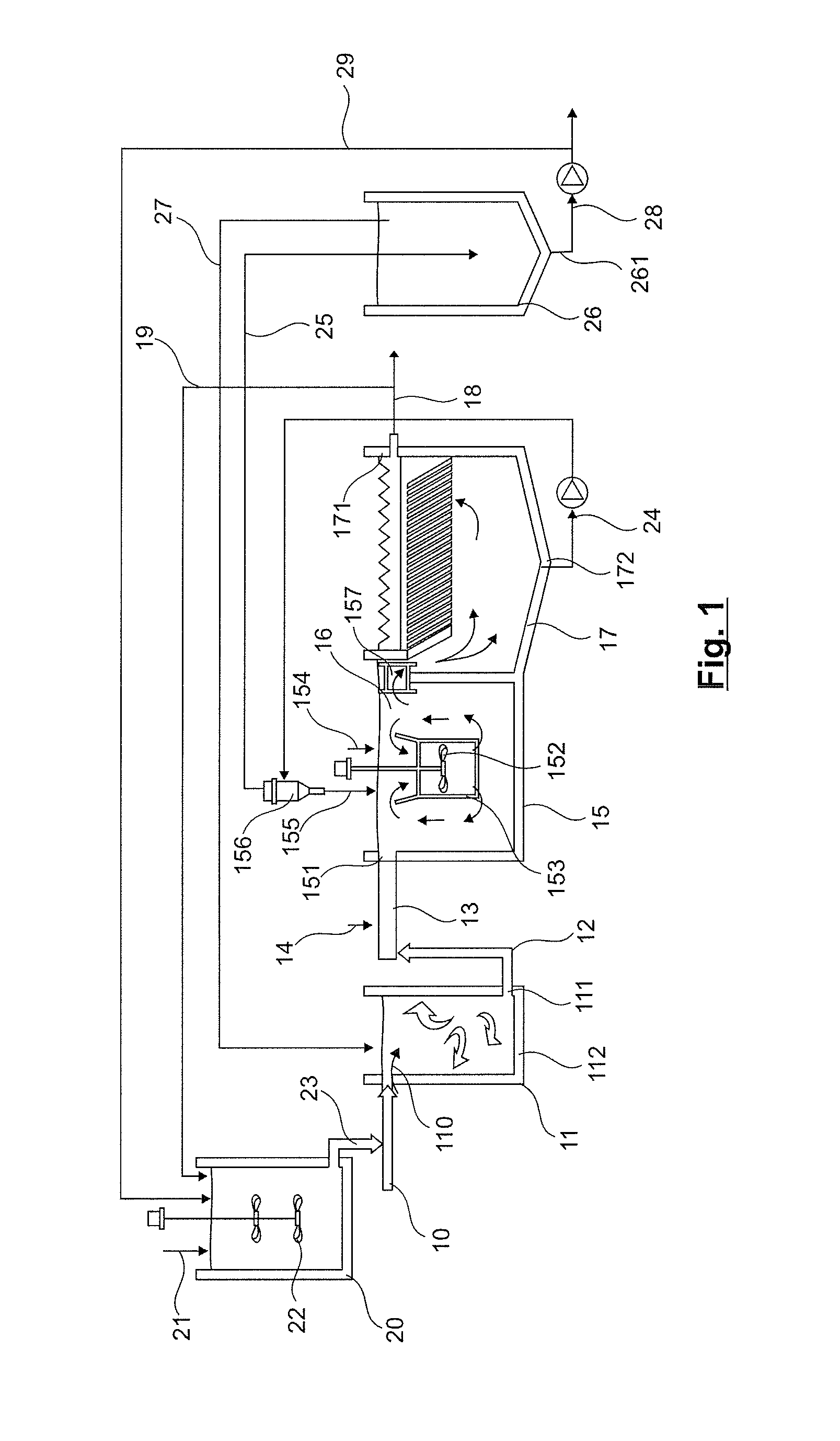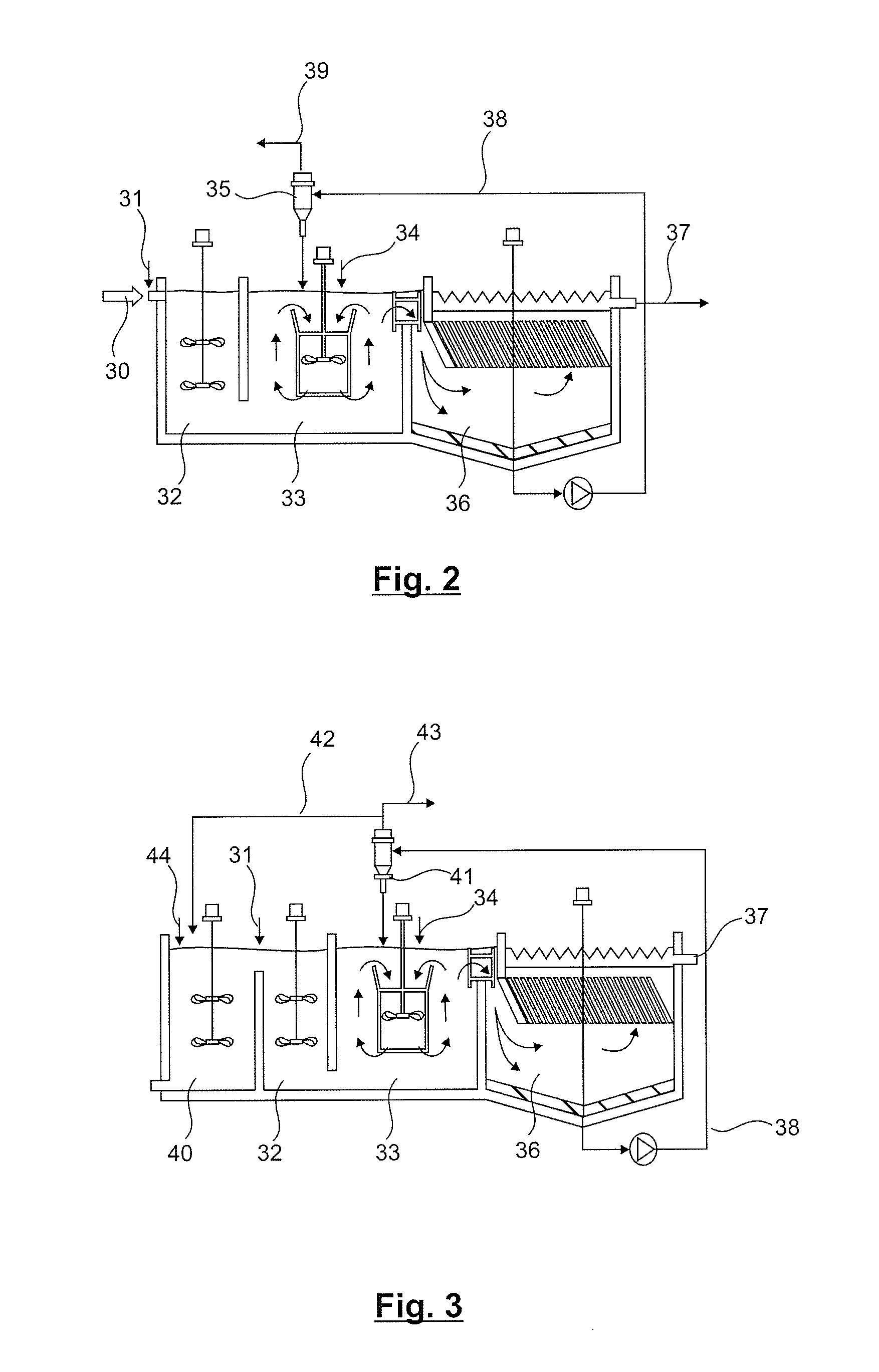Process for Treating Water to be Treated by Clarification Comprising an Adsorption of a Portion of Clarified Water and a Clarification of a Mixture of Adsorbed Clarified Water and Water to be Treated
a technology of clarified water and water treatment, which is applied in the direction of water treatment compounds, water treatment flow arrangements, cation exchangers, etc., can solve the problems of high cost, inability to produce water with a toc concentration less than or equal to 2 mg/l, and indeed expensive pac adsorbent reagents, etc., and achieve the reduction of the quantity of powdered adsorbent reagents needed for treating water.
- Summary
- Abstract
- Description
- Claims
- Application Information
AI Technical Summary
Benefits of technology
Problems solved by technology
Method used
Image
Examples
Embodiment Construction
[0067]6.1. Reminder of the General Principle of the Invention
[0068]The general principle of the invention is based on re-circulating a part of clarified water coming from an operation of clarification in a zone in which it is put into contact with a powdered adsorbent reagent and then introducing the mixture of clarified water and adsorbent reagent obtained, into the raw water to be treated, upstream from the clarification.
[0069]Such an implementation enables the production of treated water, the TOC concentration of which is lower than or equal to 2 mg / l, at a flow rate of less than 2,000 m3 / h, from raw water with a DOC concentration below 10 mg / l in using little adsorbent reagent and in a relatively compact installation.
[0070]6.2. Example of an Installation According to the Invention
[0071]Referring to FIG. 1, we present an embodiment of a water treatment installation according to the invention.
[0072]Thus, as shown in FIG. 1, such an installation comprises an intake conduit 10 for r...
PUM
| Property | Measurement | Unit |
|---|---|---|
| concentration | aaaaa | aaaaa |
| concentration | aaaaa | aaaaa |
| concentration | aaaaa | aaaaa |
Abstract
Description
Claims
Application Information
 Login to View More
Login to View More - R&D
- Intellectual Property
- Life Sciences
- Materials
- Tech Scout
- Unparalleled Data Quality
- Higher Quality Content
- 60% Fewer Hallucinations
Browse by: Latest US Patents, China's latest patents, Technical Efficacy Thesaurus, Application Domain, Technology Topic, Popular Technical Reports.
© 2025 PatSnap. All rights reserved.Legal|Privacy policy|Modern Slavery Act Transparency Statement|Sitemap|About US| Contact US: help@patsnap.com



